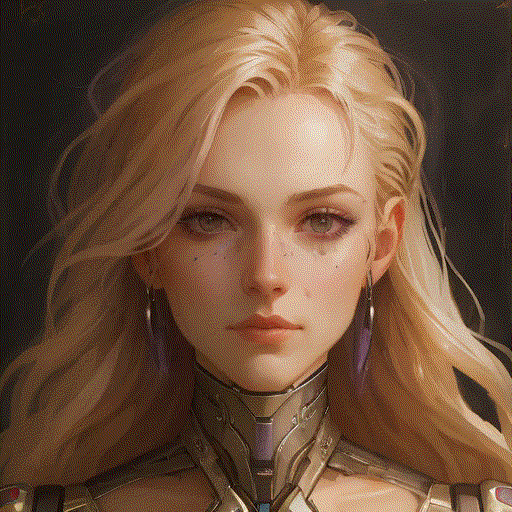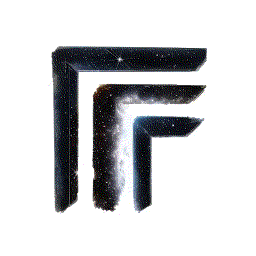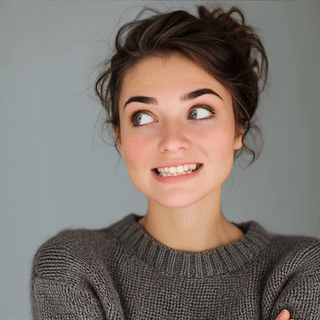lcm-animation
Maintainer: fofr

24

| Property | Value |
|---|---|
| Run this model | Run on Replicate |
| API spec | View on Replicate |
| Github link | View on Github |
| Paper link | No paper link provided |
Create account to get full access
Model overview
The lcm-animation model is a fast animation tool that uses a latent consistency model (LCM) to create smooth, high-quality animations from input images or prompts. This model is similar to the latent-consistency-model by the same creator, which also uses LCM with img2img, large batching, and Canny control net for super-fast animation generation. Other related models include MagicAnimate, which focuses on temporally consistent human image animation using a diffusion model, and AnimateLCM, a cartoon 3D model for animation.
Model inputs and outputs
The lcm-animation model takes a variety of inputs, including a starting image or prompt, seed, width, height, end prompt, number of iterations, start prompt, and various control parameters for the Canny edge detection and guidance. The model outputs a series of images that can be combined into an animation.
Inputs
- Seed: Random seed to use for the animation. Leave blank to randomize.
- Image: Starting image to use as the basis for the animation.
- Width: Width of the output images.
- Height: Height of the output images.
- End Prompt: The prompt to animate towards.
- Iterations: Number of times to repeat the img2img pipeline.
- Start Prompt: The prompt to start with, if not using an image.
- Return Frames: Whether to return a tar file with all the frames alongside the video.
- Guidance Scale: Scale for classifier-free guidance.
- Zoom Increment: Zoom increment percentage for each frame.
- Prompt Strength: Prompt strength when using img2img.
- Canny Low Threshold: Canny low threshold.
- Num Inference Steps: Number of denoising steps.
- Canny High Threshold: Canny high threshold.
- Control Guidance End: Controlnet end.
- Use Canny Control Net: Whether to use Canny edge detection to guide the animation.
- Control Guidance Start: Controlnet start.
- Controlnet Conditioning Scale: Controlnet conditioning scale.
Outputs
- A series of image files that can be combined into an animation.
Capabilities
The lcm-animation model can create high-quality, smooth animations from input images or prompts. It uses a latent consistency model and control net techniques to generate animations that maintain temporal consistency and coherence, resulting in realistic and visually appealing animations. The model is also capable of generating animations with a wide range of artistic styles, from realism to abstraction, depending on the input prompts and parameters.
What can I use it for?
The lcm-animation model can be used for a variety of creative and commercial applications, such as generating animated content for videos, social media, or advertising. It could also be used for educational or scientific visualizations, or as a creative tool for artists and animators. Like the face-to-many model by the same creator, the lcm-animation model could be used to create unique and stylized animations from input images or prompts.
Things to try
With the lcm-animation model, you could experiment with different input prompts and parameters to see how they affect the style and quality of the generated animations. For example, you could try using a more abstract or surreal prompt and see how the model interprets and animates it. You could also experiment with the Canny edge detection and guidance parameters to see how they influence the overall look and feel of the animation. Additionally, you could try using different starting images and see how the model transforms them into animated sequences.
This summary was produced with help from an AI and may contain inaccuracies - check out the links to read the original source documents!
Related Models

lcm-video2video

2
The lcm-video2video model is a fast video-to-video AI model developed by maintainer fofr. It utilizes a latent consistency model to generate new video frames from an input video. This model is similar to other video generation models like latent-consistency-model, lcm-animation, lavie, i2vgen-xl, and stable-video-diffusion, all of which aim to generate high-quality video from various input types. Model inputs and outputs The lcm-video2video model takes a video file as input, along with a text prompt and various parameters to control the video generation process. The output is a new video that is generated based on the input video and prompt. Inputs Video**: The input video file to process Prompt**: The text prompt that describes the desired output video Fps**: The number of frames per second for the output video Seed**: A random seed value to control the generation process Max Width**: The maximum width of the output video, maintaining aspect ratio Controlnet**: An optional controlnet model to use for the generation Prompt Strength**: The strength of the text prompt influence on the output Num Inference Steps**: The number of denoising steps to perform per frame Canny Low/High Threshold**: Thresholds for the Canny edge detection algorithm Control Guidance Start/End**: The start and end points for the controlnet guidance Controlnet Conditioning Scale**: The scale factor for the controlnet conditioning Outputs Output Video**: The generated video, with the provided parameters applied Capabilities The lcm-video2video model is capable of generating new video frames based on an input video and a text prompt. This allows for the creation of various types of video content, such as transforming a real-world video into an artistic or surreal style. The model's fast processing speed and ability to maintain the consistency of the input video make it a useful tool for video editing and generation tasks. What can I use it for? The lcm-video2video model can be used for a variety of video-related projects, such as: Video Editing**: Transforming existing videos into new styles or genres, adding visual effects, or altering the content based on a text prompt. Video Generation**: Creating new video content from scratch, using text prompts to guide the generation process. Video Experimentation**: Exploring the creative possibilities of video generation and transformation, testing different prompts and parameters to see the results. For example, you could use the model to turn a documentary video into an oil painting-style animation, or generate a new video of a futuristic cityscape based on a detailed text prompt. Things to try One interesting aspect of the lcm-video2video model is its ability to maintain the consistency and flow of the input video, while still allowing for significant visual transformations. This could be particularly useful for creating surreal or abstract videos, where the sense of motion and continuity is preserved despite the changing imagery. Another area to explore is the use of controlnets to guide the video generation process. By incorporating additional visual information, such as edge detection or semantic segmentation, the model may be able to produce even more refined and cohesive video outputs.
Updated Invalid Date

latent-consistency-model

1.1K
The latent-consistency-model is a powerful AI model developed by fofr that offers super-fast image generation at 0.6s per image. It combines several key capabilities, including img2img, large batching, and Canny controlnet support. This model can be seen as a refinement and extension of similar models like sdxl-controlnet-lora and instant-id-multicontrolnet, which also leverage ControlNet technology for enhanced image generation. Model inputs and outputs The latent-consistency-model accepts a variety of inputs, including a prompt, image, width, height, number of images, guidance scale, and various ControlNet-related parameters. The model's outputs are an array of generated image URLs. Inputs Prompt**: The text prompt that describes the desired image Image**: An input image for img2img Width**: The width of the output image Height**: The height of the output image Num Images**: The number of images to generate per prompt Guidance Scale**: The scale for classifier-free guidance Control Image**: An image for ControlNet conditioning Prompt Strength**: The strength of the prompt when using img2img Sizing Strategy**: How to resize images, such as by width/height or based on input/control image LCM Origin Steps**: The number of steps for the LCM origin Canny Low Threshold**: The low threshold for the Canny edge detector Num Inference Steps**: The number of denoising steps Canny High Threshold**: The high threshold for the Canny edge detector Control Guidance Start**: The start of the ControlNet guidance Control Guidance End**: The end of the ControlNet guidance Controlnet Conditioning Scale**: The scale for ControlNet conditioning Outputs An array of URLs for the generated images Capabilities The latent-consistency-model is capable of generating high-quality images at a lightning-fast pace, making it an excellent choice for applications that require real-time or batch image generation. Its integration of ControlNet technology allows for enhanced control over the generated images, enabling users to influence the final output using various conditioning parameters. What can I use it for? The latent-consistency-model can be used in a variety of applications, such as: Rapid prototyping and content creation for designers, artists, and marketing teams Generative art projects that require quick turnaround times Integration into web applications or mobile apps that need to generate images on the fly Exploration of different artistic styles and visual concepts through the use of ControlNet conditioning Things to try One interesting aspect of the latent-consistency-model is its ability to generate images with a high degree of consistency, even when using different input parameters. This can be especially useful for creating cohesive visual styles or generating variations on a theme. Experiment with different prompts, image inputs, and ControlNet settings to see how the model responds and explore the possibilities for your specific use case.
Updated Invalid Date

frames-to-video

1
The frames-to-video model is a tool developed by fofr that allows you to convert a set of frames into a video. This model is part of a larger toolkit created by fofr that includes other video-related models such as video-to-frames, toolkit, lcm-video2video, audio-to-waveform, and lcm-animation. Model inputs and outputs The frames-to-video model takes in a set of frames, either as a ZIP file or as a list of URLs, and combines them into a video. The user can also specify the frames per second (FPS) of the output video. Inputs Frames Zip**: A ZIP file containing the frames to be combined into a video Frames Urls**: A list of URLs, one per line, pointing to the frames to be combined into a video Fps**: The number of frames per second for the output video (default is 24) Outputs Output**: A URI pointing to the generated video Capabilities The frames-to-video model is a versatile tool that can be used to create videos from a set of individual frames. This can be useful for tasks such as creating animated GIFs, generating time-lapse videos, or processing video data in a more modular way. What can I use it for? The frames-to-video model can be used in a variety of applications, such as: Creating animated GIFs or short videos from a series of images Generating time-lapse videos from a sequence of photos Processing video data in a more flexible and modular way, by first breaking it down into individual frames Companies could potentially monetize this model by offering video creation and processing services to their customers, or by integrating it into their own video-based products and services. Things to try One interesting thing to try with the frames-to-video model is to experiment with different frame rates. By adjusting the FPS parameter, you can create videos with different pacing and visual effects, from slow-motion to high-speed. You could also try combining the frames-to-video model with other video-related models in the toolkit, such as video-to-frames or toolkit, to create more complex video processing pipelines.
Updated Invalid Date

live-portrait

60
The live-portrait model is an efficient portrait animation system that uses a driving video source to animate a portrait. It is developed by the Replicate creator fofr, who has created similar models like video-morpher, frames-to-video, and toolkit. The live-portrait model is based on the research paper "LivePortrait: Efficient Portrait Animation with Stitching and Retargeting Control" and shares some similarities with other portrait animation models like aniportrait-vid2vid and livespeechportraits. Model inputs and outputs The live-portrait model takes a face image and a driving video as inputs, and generates an animated portrait that follows the movements and expressions of the driving video. The model also allows for various configuration parameters to control the output, such as the size, scaling, positioning, and retargeting of the animated portrait. Inputs Face Image**: An image containing the face to be animated Driving Video**: A video that will drive the animation of the portrait Live Portrait Dsize**: The size of the output image Live Portrait Scale**: The scaling factor for the face Video Frame Load Cap**: The maximum number of frames to load from the driving video Live Portrait Lip Zero**: Whether to enable lip zero Live Portrait Relative**: Whether to use relative positioning Live Portrait Vx Ratio**: The horizontal shift ratio Live Portrait Vy Ratio**: The vertical shift ratio Live Portrait Stitching**: Whether to enable stitching Video Select Every N Frames**: The frequency of frames to select from the driving video Live Portrait Eye Retargeting**: Whether to enable eye retargeting Live Portrait Lip Retargeting**: Whether to enable lip retargeting Live Portrait Lip Retargeting Multiplier**: The multiplier for lip retargeting Live Portrait Eyes Retargeting Multiplier**: The multiplier for eye retargeting Outputs An array of URIs representing the animated portrait frames Capabilities The live-portrait model can efficiently animate a portrait by using a driving video source. It supports various configuration options to control the output, such as the size, scaling, positioning, and retargeting of the animated portrait. The model can be useful for creating various types of animated content, such as video messages, social media posts, or even virtual characters. What can I use it for? The live-portrait model can be used to create engaging and personalized animated content. For example, you could use it to create custom video messages for your customers or clients, or to animate virtual characters for use in games, movies, or other interactive media. The model's ability to control the positioning and retargeting of the animated portrait could also make it useful for creating animated content for educational or training purposes, where the focus on the speaker's face is important. Things to try One interesting thing to try with the live-portrait model is to experiment with the various configuration options, such as the retargeting parameters, to see how they affect the output. You could also try using different types of driving videos, such as video of yourself speaking, to see how the model handles different types of facial movements and expressions. Additionally, you could try combining the live-portrait model with other AI models, such as speech-to-text or text-to-speech, to create more complex animated content.
Updated Invalid Date